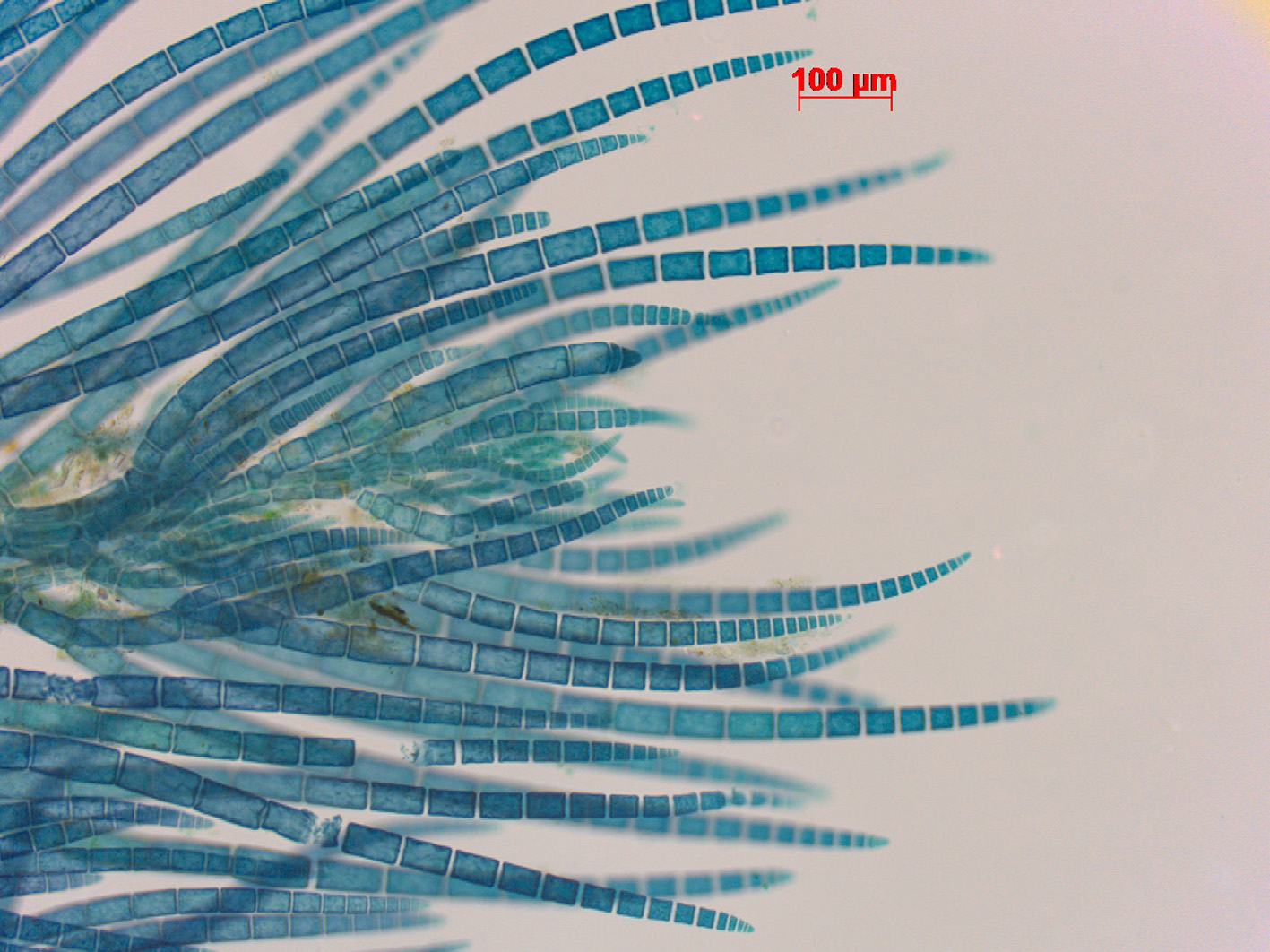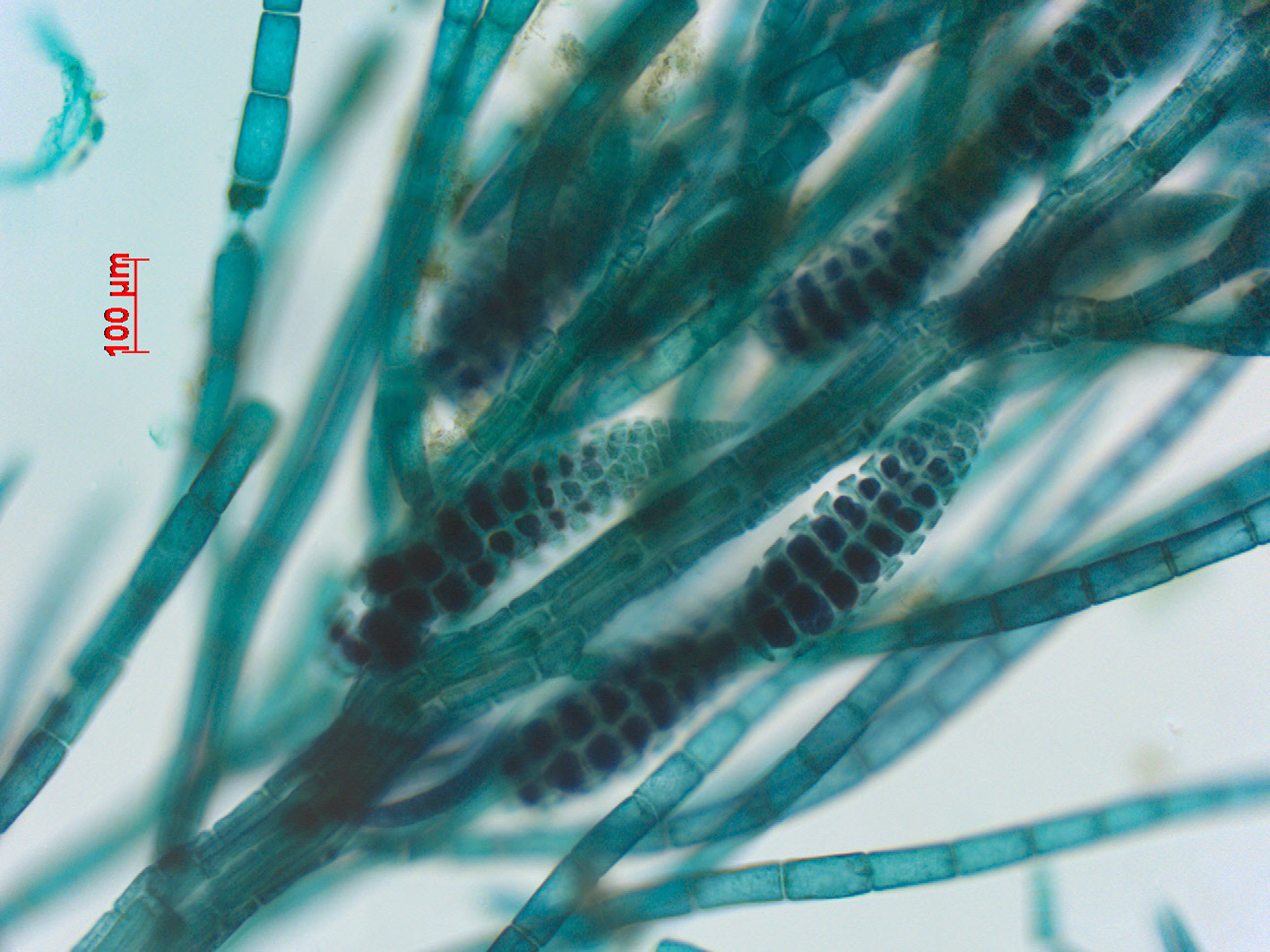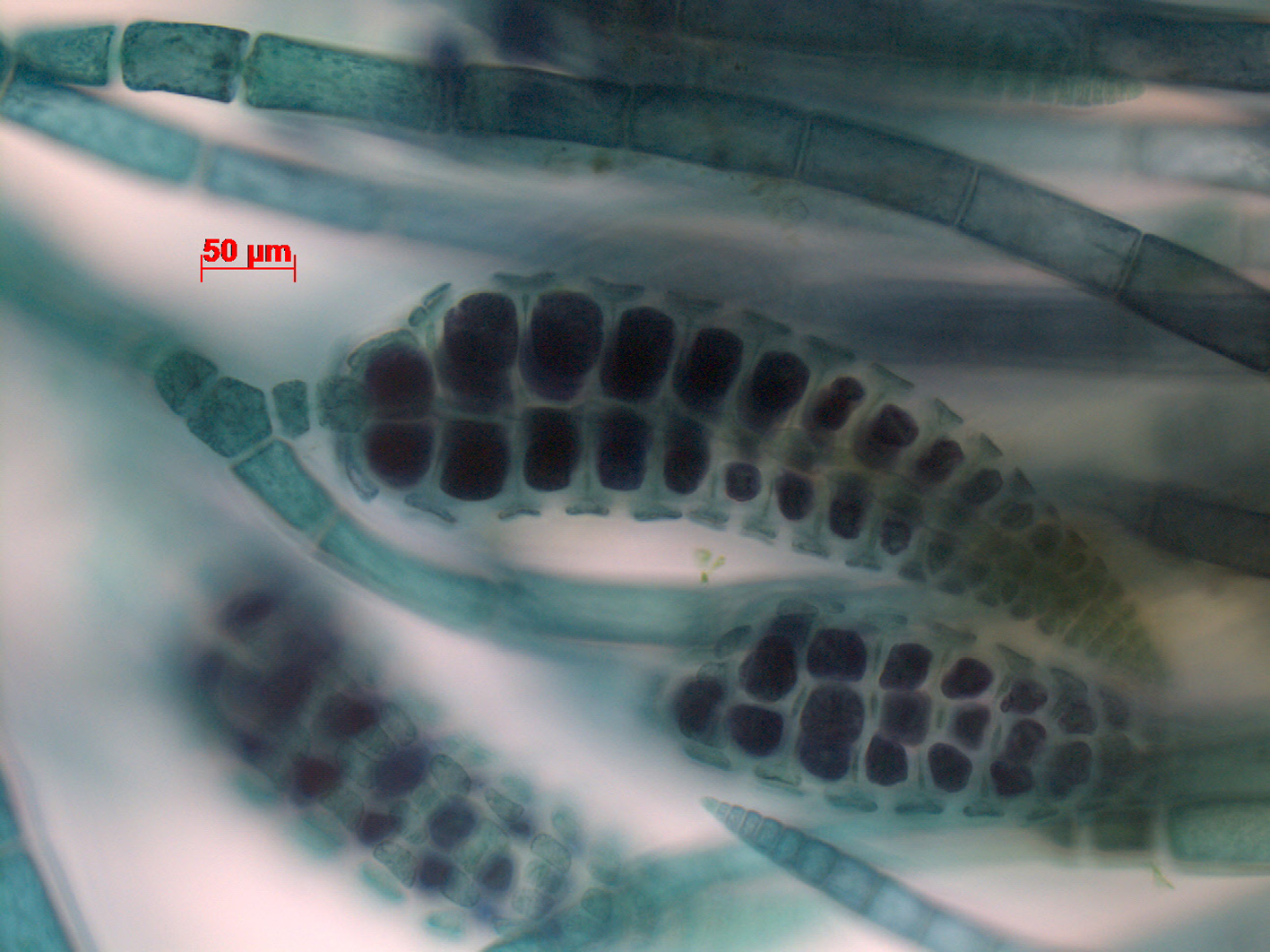Seaweeds of the South African South Coast


Order Ceramiales
Family Dasyaceae
Dasya sp 3
Plants with relatively large repent parts, attached by many multicellular rhizoids originating from the outer cortical cells of the main axes. Several erect axes arising from the prostrate part, up to ca. 1.5 cm tall. Apical sections of erect axes for some distance uncorticated, with 5 pericentral cells, cortication becoming complete only in the repent axes. Repent axes to 500 µm in diameter, erect axes rarely more than 250µm in diameter. Each segment with a single pseudolateral; pseudolaterals monosiphonous, up to 2 (-2,5) mm long, branched once from the second or third (fourth) cell, occasionally forming a second lateral two cells higher up; unbranched end of ramuli up to 20 cells long. Pseudolaterals up to ca. 50 µm in diameter at the base, only little incurved, the cells up to 200 µm long; young branchlets tapering to a triangular apical cell, in older branchlets the apical cell becoming rounded, often shorter than broad. Tetrasporangial stichidia up to 700 X 150 µm, often formed instead of the first branch of a pseudolateral, sometimes a second stichidium two cells higher up. When bearing stichidia the proximal cells of the pseudolateral remaining shorter than broad. Fertile segments with 6 tetrasporangia up to 50 µm in diameter, each with 3 comparatively long cover cells. Sexual reproduction not seen.
Collections, ecology and regional distribution
Found in the lower intertidal and sublittoral fringe at Preekstoel, Stilbaai (28) and Mkambati (47), implying a distribution along coastal sections 28-47.
World distribution: unknown.

Dasya sp III, partly corticated main axis and monosiphonous pseudolaterals (stained slide).

Dasya sp III, partly corticated main axis and monosiphonous pseudolaterals (stained slide).

Dasya sp III, corticated repent axis with attaching rhizoids and erect axes (stained slide).

Dasya sp III, apical portion of thallus (stained slide).

Dasya sp III, tetrasporangial stichidia (stained slide).

Dasya sp III, detail of tetrasporangial stichidium (stained slide).
Cite this record as:
Anderson RJ, Stegenga H, Bolton JJ. 2016. Seaweeds of the South African South Coast.
World Wide Web electronic publication, University of Cape Town, http://southafrseaweeds.uct.ac.za; Accessed on 07 December 2025.